Themed collection Soft Matter at Aqueous Interfaces

Concepts for soft interfaces
The transfer of soft matter concepts from bulk to interfaces opens a route to design interfaces which respond strongly to external fields.
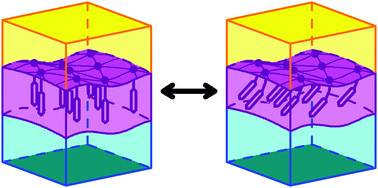
Soft Matter, 2017,13, 1940-1942
https://doi.org/10.1039/C6SM02413K
Trimethylamine-N-oxide: its hydration structure, surface activity, and biological function, viewed by vibrational spectroscopy and molecular dynamics simulations
Vibrational spectroscopy and molecular simulations revealed the hydrophilicity and hydrophobicity of TMAO in aqueous solution.
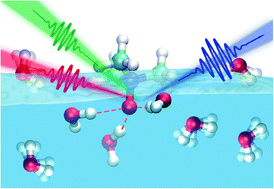
Phys. Chem. Chem. Phys., 2017,19, 6909-6920
https://doi.org/10.1039/C6CP07284D
Characterisation of hydration and nanophase separation during the temperature response in hydrophobic/hydrophilic elastin-like polypeptide (ELP) diblock copolymers
The temperature dependent nanoscale dehydration of diblock elastin-like polypeptides (ELPs) can be tuned through the hydrophobic to hydrophilic block length ratio.

Soft Matter, 2017,13, 1816-1822
https://doi.org/10.1039/C6SM02427K
Water film squeezed between oil and solid: drainage towards stabilization by disjoining pressure
The spontaneous drainage of aqueous solutions of salt squeezed between an oil drop and a glass surface is studied experimentally.
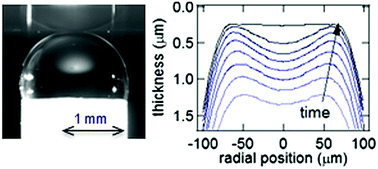
Soft Matter, 2017,13, 1384-1395
https://doi.org/10.1039/C6SM02423H
Foundation of correlation ellipsometry
An experimental strategy for the detection of fluctuation dynamics at interfaces based on a combination of photon correlation spectroscopy (PCS) with a nulling ellipsometry scheme is investigated theoretically.

Soft Matter, 2017,13, 1132-1141
https://doi.org/10.1039/C6SM02285E
Soft matter interactions at the molecular scale: interaction forces and energies between single hydrophobic model peptides
The interaction between single hydrophobic molecules is quantitatively characterized by using an atomic force microscope (AFM).
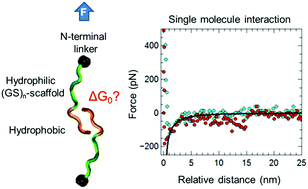
Phys. Chem. Chem. Phys., 2017,19, 4216-4221
https://doi.org/10.1039/C6CP07562B
Controlled and tunable design of polymer interface for immobilization of enzymes: does curvature matter?
Controlled and precise design of polymer interfaces leads to the programmed and rational design of functional adhesive materials, coatings, carriers for catalysts, etc. The grafting density of polymer brush layers has a strong impact on surface charge, swelling ratio, adhesion behavior and effectiveness of enzyme immobilization. There is no direct transferability of the results received from planar to curved substrates.
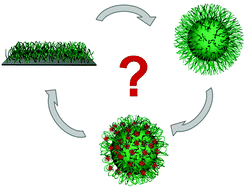
Soft Matter, 2017,13, 1074-1084
https://doi.org/10.1039/C6SM02380K
Electrolytes at interfaces: accessing the first nanometers using X-ray standing waves
Ion–surface interactions are of high practical importance in a wide range of technological, environmental and biological problems.
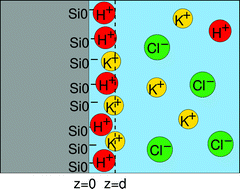
Phys. Chem. Chem. Phys., 2017,19, 167-174
https://doi.org/10.1039/C6CP06888J
Surface organization of a DPPC monolayer on concentrated SrCl2 and ZnCl2 solutions
Zn2+ strongly interacts with DPPC molecules, while Sr2+ does not, which could explain their respective enrichment and depletion in sea spray aerosols.
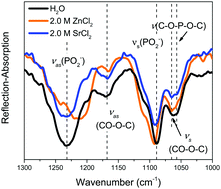
Phys. Chem. Chem. Phys., 2016,18, 32345-32357
https://doi.org/10.1039/C6CP06887A
Polyelectrolytes adsorbed at water–water interfaces
Interfacial adsorption of polyelectrolytes provides a new strategy for the stabilization of water-in-water emulsions formed by incompatible polymers.
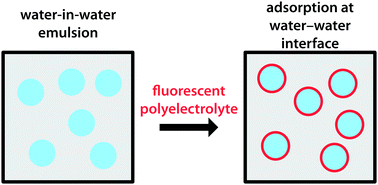
Phys. Chem. Chem. Phys., 2016,18, 30931-30939
https://doi.org/10.1039/C6CP06789A
A combined 3D and 2D light scattering study on aqueous colloidal model systems with tunable interactions
The near-wall dynamics of charged particles are investigated in aqueous suspensions up to volume fractions close to the isotropic-to-ordered transition.
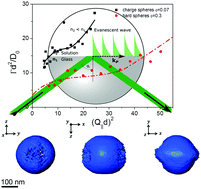
Soft Matter, 2016,12, 8485-8494
https://doi.org/10.1039/C6SM01376G
Abnormal polymer transport in crowded attractive micropost arrays
We investigate polymer diffusion in a quasi-two-dimensional environment decorated with attractive cylindrical posts using Langevin dynamics simulation.
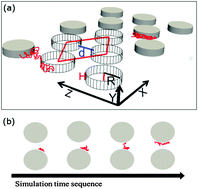
Soft Matter, 2016,12, 7969-7976
https://doi.org/10.1039/C6SM01488G
Particle detachment from fluid interfaces: theory vs. experiments
Theory and experiments show that the contact angles of microspheres at oil–water interfaces can be accurately extracted from AFM force–distance curves.
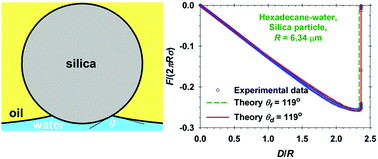
Soft Matter, 2016,12, 7632-7643
https://doi.org/10.1039/C6SM01716A